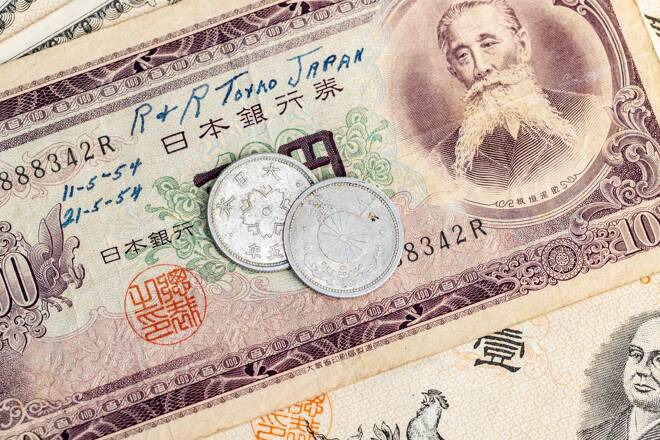Advertisement
Advertisement
USD/JPY Forecast: Machinery Orders Slide as Economic Uncertainty Lingers
By:
Key Points:
- On Monday (June 17), machinery orders for April will warrant investor attention.
- Investors should also monitor Bank of Japan commentary after the BoJ decision to leave interest rates unchanged.
- Later in the session on Monday, US manufacturing sector data and FOMC Member commentary also need consideration.
Machinery Orders Signal a Waning Demand Outlook
On Monday (June 17), machinery orders from Japan attracted investor interest.
Machinery orders slid by 2.9% in April after rising by 2.9% in March.
The April numbers highlighted continued economic uncertainty after the Q1 2024 economic contraction.
Nevertheless, the Bank of Japan remains fixated on wage growth, services, and household spending to drive an economic recovery and demand-driven inflation. However, a weak macroeconomic environment may affect consumer confidence. A weaker consumer confidence environment could reduce consumer spending and dampen demand-driven inflation.
Beyond the numbers, investors should monitor Bank of Japan commentary. Views on inflation, the economic outlook, and interest rate hikes could move the dial.
US Economic Calendar: Manufacturing Sector Data and Fed Speeches
Later in the session on Monday, the US manufacturing sector will be in focus.
Economists forecast the NY Empire State Manufacturing Index to increase from -15.6 to -13.0 in June. An unexpected fall could test investor expectations of a soft US landing.
However, the numbers are unlikely to influence the Fed rate path. The manufacturing sector accounts for less than 30% of the US economy.
Beyond the numbers, investors should monitor FOMC Member chatter. Views on the economic outlook, inflation, and the Fed interest rate trajectory need consideration.
The FOMC projections for Core PCE inflation and the Fed Funds Rate were more hawkish despite softer US inflation figures for May. Deviations from the FOMC economic projections for inflation and the Fed Funds Rate could move the dial.
According to the CME FedWatch Tool, the chances of a September Fed interest rate hike jumped from 50.5% to 67.7% in the week ending June 14. The shift in sentiment toward a September Fed rate hike reflected the influence of the US CPI Report, which countered the more hawkish FOMC economic projections.
Short-term Forecast
Near-term trends for the USD/JPY will hinge on US retail sales figures, inflation numbers from Japan, and preliminary Services PMIs. Disappointing numbers from the US could tilt monetary policy divergence toward the Japanese Yen. However, investors should monitor central bank chatter after the BoJ and Fed monetary policy decisions.
USD/JPY Price Action
Daily Chart
The USD/JPY sat comfortably above the 50-day and 200-day EMAs, affirming the bullish price signals.
A breakout from 158 could give the bulls a run at the 159 handle. Furthermore, a USD/JPY return to 159 could signal a move toward the April 29 high of 160.209.
Investors should consider central bank commentary, machinery tool orders from Japan, and US manufacturing sector data.
Conversely, a USD/JPY break below the 156 handle could bring the 50-day EMA into play. A fall through the 50-day EMA could signal a drop toward the 151.685 support level.
The 14-day RSI at 59.07 suggests a USD/JPY return to the April 29 high of 160.209 before entering overbought territory.
About the Author
Bob Masonauthor
With over 28 years of experience in the financial industry, Bob has worked with various global rating agencies and multinational banks. Currently he is covering currencies, commodities, alternative asset classes and global equities, focusing mostly on European and Asian markets.
Advertisement
